Fire pits have an almost magical allure, drawing us in with their mesmerizing flames and comforting warmth. However, the romanticism of a crackling fire can quickly fade when smoke clouds the air, stinging our eyes and choking our throats. While a 100% smokeless fire is, well, impossible, enjoying a smoke-less fire in your fire pit is not just a dream; it's entirely achievable with the right basic factors and approach. In this guide, we'll delve into the three fundamental factors for mastering the art of smokeless fires: fuel, flow, and flame.

However, before we dive in, let's address a common misconception: the allure of those "can style" incinerators that promise smokeless fires with minimal effort. While they might seem convenient, the reality is often far from ideal. Under the right conditions - and after heating up for a spell - they can indeed reduce smoke, but what they offer in convenience, they lack in ambiance. After all, half the joy of a fire pit is being able to see the flames dance and flicker, not just burning fuel in a hidden container. So let's set aside the fad fires and focus on what truly makes a fire pit experience memorable: a real, visible fire that embodies the essence of warmth and community.
1. Fuel: The Foundation of a Smokeless Fire
The key to a smokeless fire lies in the quality of your fuel, particularly the dryness of your firewood. Wet or green wood contains a significant amount of moisture, which, when burned, creates excessive smoke. Therefore, the first step to smokeless bliss is ensuring your firewood is properly seasoned and thoroughly dried. Seasoned wood not only burns more efficiently but also produces less smoke.
- Choosing the Right Wood: Opt for hardwoods like oak, maple, or birch, as they burn hotter and cleaner than softwoods like pine or spruce.
- Proper Storage: Store your firewood in a dry, well-ventilated area for at least six months to a year to allow it to season properly.
- Starting: Before lighting your fire, ensure your wood is split into smaller pieces to increase surface area and aid combustion. And, to speed fire development, begin with a good fire starter that gets things rollin’ in the right direction.

2. Flow: Nurturing Airflow for Optimal Combustion
Good airflow is essential for maintaining a smokeless fire. Without adequate ventilation, your fire will struggle to burn efficiently, leading to incomplete combustion and increased smoke production. To promote proper airflow, consider the following tips:
- Ventilation: Some fire pits and inserts come equipped with log grates or chimneys that allow good airflow. If your fire pit does not have a good log grate for ideal airflow, this is a great place to start on your quest for smoke reduction and ideal fire ambiance.
- Clear Surroundings: Ensure your fire pit is clear of any obstructions that could impede airflow, such as overhanging branches or debris.
- Positioning: Place your firewood in a strategic arrangement, such as a teepee or log cabin style, to allow air to circulate freely. Place the wood on the fire grate, allowing for the air to supply the flame with oxygen from underneath for a clean burn.
3. Flame: Harnessing Heat for Clean Combustion
The flame itself plays a crucial role in the combustion process, dictating the efficiency and cleanliness of your fire. To achieve a smokeless burn, focus on generating and maintaining a hot, consistent flame:
- Kindling: Start your fire with a good fire starter or some small, easily ignitable materials like newspaper or dry twigs to generate a strong initial flame.
- Stoking: Once your fire is lit, periodically stoke it to ensure the flames remain vigorous and well-fed. You can begin or rekindle the fire later by blowing on the embers to heat the newly-placed logs.
- Avoid Smothering: Resist the temptation to smother your fire with excessive fuel, as this can lead to smoldering and increased smoke production. Instead, add small amounts of wood gradually to sustain a steady flame. True fire aficionados will reposition the logs from time to time to optimize balanced flames and air flow using a fire poker or heavy duty fire gloves.
By paying attention to the three crucial factors of fuel, flow, and flame, you can transform your fire pit experience from smoky frustration to smokeless serenity. With properly seasoned firewood, optimal airflow, and a robust flame, you'll be able to enjoy the warmth and ambiance of your fire pit without the nuisance of smoke. So gather your supplies, light your fire, and bask in the glow of a truly smoke-less blaze.









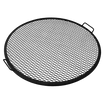



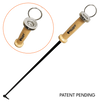


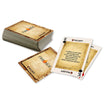

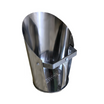



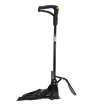





Leave a comment
All comments are moderated before being published.
This site is protected by hCaptcha and the hCaptcha Privacy Policy and Terms of Service apply.